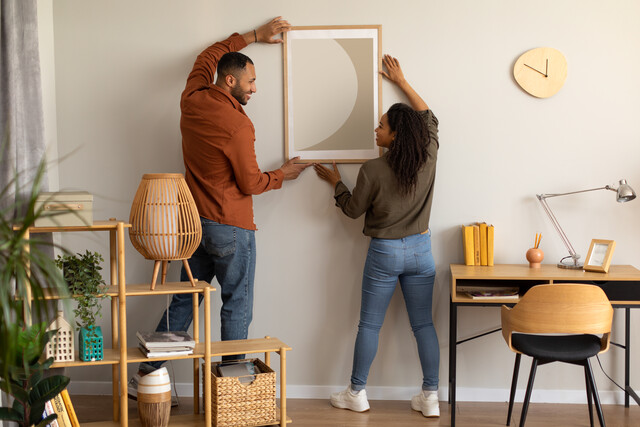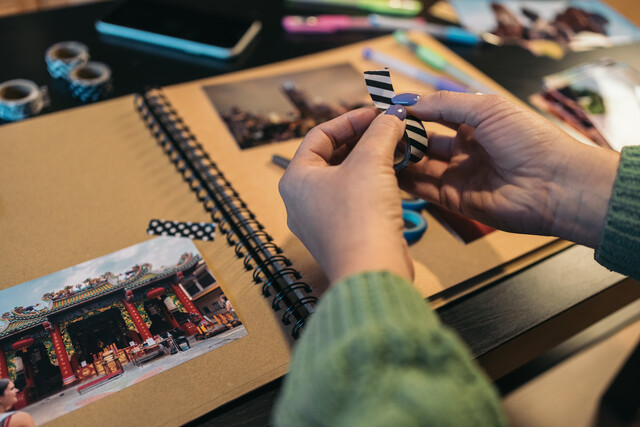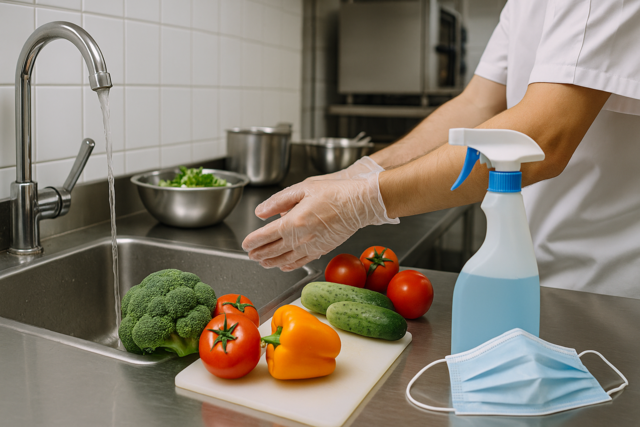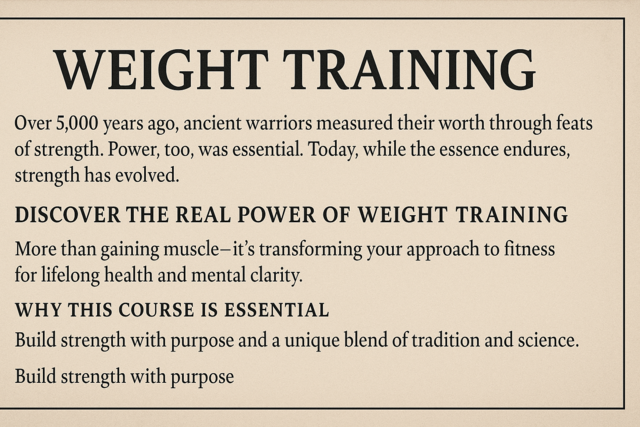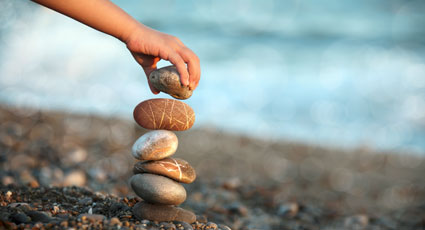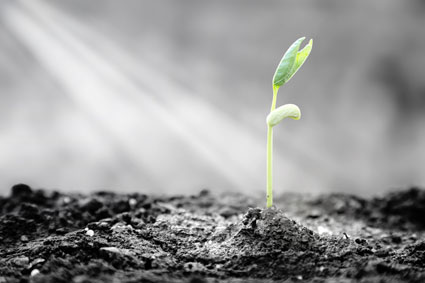Where to Start/Planning
Even this pull-apart lemon coffee cake can seem to take longer than originally planned. That's usually because there should always be a "longer than I thought" amount of time built in to the original plan. That way, no surprises.
For single-layer cakes, depending on your experience, it's smart to bake the cake a day ahead.
- Day one - Bake and cool the cake
- Day two - Tort the cake, if needed; fill and crumb coat. Make whatever decorations you can ahead of time.
- Day three - Ice and decorate
If you are making a tiered cake, follow the same time frame; however, if the cake has a lot of decorations, you may want to start making them a week ahead. That way, if something breaks or doesn't turn out as expected, you'll have time for a redo.
Building in additional time also keeps you from rushing. The inclination is to quickly fill your layers with icing or a special filling, and frost the cake with fondant or icing. Learning not to rush becomes painfully clear when the cake buckles from the weight of the fondant or icing, and slides to one side because you didn't allow the filling to set long enough.
It's always best to refrigerate your cake after it cools. That can mean if you start your baking at 9 o'clock at night, you may be up until 11 or 12 waiting for it to cool enough to refrigerate. Baking time varies with the kind of cake and oven temperature differences.
Review the entire recipe before starting, and make sure you have all the ingredients and supplies called for. Those trips to the market really add up. Practice your icing- and flower-making techniques before using them on the cake itself. Have enough icing bags on hand.
Now that you have some basic cake baking and decorating supplies, you may want to begin designing specialty cakes. Use the Internet, library, and designs you have clipped from magazines and brochures. These can serve as a springboard for your own ideas.
Original creations require just as much, and often more, planning than following instructions. Much like writing, when you read, it triggers your own ideas; when you have a cake picture before you, you can better visualize your own ideas.
You'll also want to consult the directions in cake books for techniques. Consider stacking cake pans, one on top of the other, if you are doing a tiered cake. Some cake stores will have dummy cakes made from Styrofoam. This is even better than cake pans to help you visualize a final product.
- Step one: Sketch your cake with sidebar notes or arrows pointing to the detail.
- Step two: Consult cake books and Internet site galleries for instructions (there are many differences of opinions regarding cakes and cake decorating). Go with whatever feels right to you and, also, the credibility of the professional. Think filling and icing, custom decorations, and manufactured decorations.
- As you work, step back and take a look at your design with a fresh eye. You may find it looks perfectly fine the way it is, and there is no need to add more detail. Often, as in the above cake, the piping really enhances the shape of the cake, and only nine large roses makes this cake simply beautiful.
Lastly, don't consider slicing up the cake a heart break. This is the second phase of your hard work, the tasting.
Many of the recipes you come across are modified for the home baker. Cake decorating is challenging and rewarding for the novice and the experienced bakers. Delight your family and friends, and sell-out your goodies at the neighborhood bake sale.
Substitutions, Equivalents, and Metric Conversions
Why do you need metric conversions? You may not realize this, but the United States is in the minority when it comes to the metric system. We have stuck to our guns and have refused to give up our pounds, ounces, cups, etc. Eventually, we will have to switch to the metric system. The world is getting smaller and if we bakers and chefs want to swap recipes from all around the world, we'll need to understand a different measuring system equivalent. Keep these calculations and substitutions handy in your baking book or kit.
----------------------------- -
The 411 on Cake Baking Basics.Since this is most likely your first "real" attempt at serious cake baking and decorating, you may feel a bit intimidated or overwhelmed. And while fear of the unknown is a somewhat expected response, the reality is that mastering the basics of cake decoration is easier than it seemsIn this section, we'll dive right into the basics. We'll cover essentials like:
-
Lining cake tins and pans
-
Working with fondant
-
Working with marzipan
-
Filling your pastry bag
-
Icing consistency
-
Piping positions and techniques, and
-
Tiers and layers
So, let's get started!Lining Cake Tins and PansLining your tins and pans is important. Failure to do so can result in batter sticking to your pans and unsightly bumps and caverns. So, without any further ado, let's discuss lining both round and square pans.Lining a Round Tin:Lining a round cake tin is a two-step process. First, grease your cake tin. With that accomplished, cut out a strip of silicone paper (also known as baking parchment), making it a bit longer than the total circumference of your tin and about three inches higher. Fold the paper back about an inch all along the length, snipping it at angles in intervals up to the fold line. Next, press your paper around the insides of the pan so that the snipped edge overlaps the base of your tin for a snug fit. This will protect the sides of your cake. Once you've done this, cut out a circle, using your tin as a template. You'll fit this over the snipped paper to cover the base of your pan.Lining a Square Tin:Start again with your baking parchment. Cut it out by first measuring the length and width of your tin and doubling the actual depth. Center your tin on your parchment, then make four cuts, from the parchment edges to the corner of your tin. Now grease your tin and fit the silicone paper inside, both folding and overlapping at the corners. For your base parchment, cut out a square with your tin base serving as your template and fit it into the base. Pretty simple, huh?Working With Fondant (or Sugar-paste)Now we're moving on to fondant - a sophisticated cake covering that makes a great canvas for your budding cake design ideas. Or you can buy pourable or ready-made mixes. These directions apply to rolled fondant.- Before applying the fondant, you'll need to coat your cake with a very thin crumb coat of either butter cream, ganache or jam. Let your cake air dry before you get started; also make sure your cake is level and any gaps have already been filled with buttercream, or the icing or filling of your choice.
- Now it's time to add in any food coloring or flavors, making sure to only use gel or paste varieties.
- Make sure your work area is completely spic and span.
- Before you can use your rolled fondant, you need to soften it. To do this, you can use a thin coat of shortening on your hands and knead it into the sugar-paste. On the other hand, if your fondant is too soft, you can stiffen it up by kneading in a bit of sifted powdered sugar. (When you're rolling out fondant, you may want to invest in a Roul'Pat non-stick mat.)
- Prepare your work area by applying an even dusting of equal parts of sifted cornstarch and confectioner's sugar.
- Now, roll the fondant out, using slight pressure until it's a uniform 3/8" to 1" in thickness. While rolling, rotate the sugar-paste constantly to keep it from sticking to the surface. However, do not flip it over.
- If you notice that air bubbles are forming, prick each bubble with a needle and lightly rub the bubble until the air is gone.
- Now it's time to gently polish the surface of the fondant in a circular motion using the palm of your hand for a resulting smooth, shiny finish.
- Place your sugar-paste on the work table (not the turntable) that's in front of you.
- Carefully lift the fondant, making sure not to push your fingers through. Or you can simply roll it around a rolling pin, or even use a specialized fondant lifter.
- Now lay the sheet of fondant over the cake, starting with the side that's closest to you, working your way across to the opposite side to make sure that you've covered the entire top and sides of your cake.
- Cut off any excess fondant with a pair of scissors or a sharp, serrated knife. Then, slowly work your way around the cake, smoothing out any wrinkles. Use a bowl scraper to smooth out, and then adhere the fondant to the cake, finishing by removing any excess fondant from the edges.
- Once this is done, decorate your cake with any royal icing or gum paste decorations.
- Finally, you can use stencils, gel piping techniques, and/or rice paper transfers for beautiful, professional-looking results.
Even the most professional cake decorators recommend buying fondant ready-made. It tastes just as good as making it yourself and is about 10 times less work. If you decide you want to try making fondant, read the recipe before you make a final decision:
Ingredients
1 tablespoon unflavored gelatin
1/2 cup cold water
1/2 cup glucose or white corn syrup
1 tablespoon glycerin
1 teaspoon flavoring (pure vanilla extract will impart an ivory tint; clear extracts are best if you want a pure white fondant)
2 pounds sifted confectioner's sugar
Instructions:
- Combine gelatin and cold water in the top of a double boiler and let stand until softened (about five minutes). Heat on medium heat until dissolved and clear.
- Remove from heat and add the glucose (or syrup), glycerin, and flavor. Mix well.
- Place 1-1/2 pounds confectioner's sugar in a bowl and make a well in the center. Slowly pour the gelatin mixture into the well and mix until sugar is blended.
- Use a rubber spatula to scrape down sides of bowl and remove the sticky fondant to a clean work surface (marble or plastic - avoid wood). Knead in remaining 1/2 pound confectioner's sugar, a little at a time, until the fondant is smooth, pliable and doesn't stick to your hands.
- Roll the fondant into a ball and wrap in plastic. Place in an airtight container in a cool, dry place to set overnight.
Note: If the fondant is too soft, add more sugar; if too stiff, add water a scant drop at a time. Fondant can be kept for several months sealed tightly in a plastic bag inside an airtight container. Do not refrigerate or freeze. When ready to use, knead until soft.
Decorating with MarzipanMarzipan (often confused with almond paste) is a very versatile cake decorating tool. You can roll it out and use it much like fondant, or you can use it as a type of modeling clay, to make miniature edibles of flowers or other designs and figures.Marzipan can be made from scratch using a recipe based on a 2:1 ratio of almonds to sugar. Or you can purchase ready-made marzipan that works and tastes just as delightful.When wrapping and covering a whole cake, working with marzipan is nearly identical to working with fondant.To use it to make fruits or designs, use the marzipan (which you can flavor and color just like fondant) like it was play-dough, playing with it until you have just the model you're after. If you're interested in looking further into baking with marzipan, here's a great site you can check out for a little extra help:Want to learn more? Take an online course in Cake Decorating.Filling Your Pastry BagOnce you get the hang of it, filling a pastry bag is pretty simple. However, at first, it may prove a little trickier than you imagined.Begin by dropping the decorating tip into the bag, making sure it fits well in its place. Then place the fitted icing bag into a pitcher, turning any excess material out and over, overlapping the pitcher's opening.Next transfer your icing mixture into your bag. Once it's filled, raise the bag out of the pitcher and place it down flat on a hard surface.Using your hands, begin pushing the mixture down towards the tip. Softly poke at the bag with a finger to help remove any air pockets contained within.To use your filled bag, simply gather the excess material and twist it tightly to prevent any of your icing from escaping. With one hand, you'll guide the tip. With your other, you'll squeeze the bag from the twisted area downwards.As you use up the mixture, continue twisting the bag to push the remaining icing down to the tip.Icing ConsistencyDifferent cake recipes will require different icing consistencies. If your consistency is off, your decorations will be off, as well. Surprisingly, a few seemingly small drops of liquid can make a tremendous difference in the results you get.There are several factors that can, and will, affect the consistency of your icing:-
Humidity
-
Temperature
-
Ingredients, and
-
Equipment
As a general rule, if you find that your icing is too thin, you can thicken it up by adding some extra powdered sugar. On the other hand, if your icing is too thick, add a few drops of liquid to the mixture.Stiff Icing:Stiffer icings are used for figure piping and making string work and decorations such as roses, carnations, or sweet peas (which have upright petals). If your icing isn't stiff enough, your petals will most likely droop. If you notice that your icing cracks when you pipe it, your icing is likely a bit too stiff. You also can add a tad of light corn syrup to the icing you'll use for string work, for increased elasticity.Medium Icing:Medium consistency icings are ideal for decorations such as stars, shell borders, or flat petal flowers. Using overly stiff or thin icing will result in you falling short of the uniformity that characterizes these types of decorations.Thin Icing:Thin icing is used to make decorations like printing, writing, vines, and/or leaves. If you want your leaves pointier, your vines not to break, and writing that goes with an easy flow, you can add in 1-2 tsp. of light corn syrup for each cup of icing you'll have.Thin icing is used to help you smoothly ice your cake. Begin with your prepared icing recipe, and then proceed to add small amounts of the liquid called for in your recipe (generally milk or water), until you've reached the spreading consistency you desire.Piping Positions & Techniques.Consistency isn't the only factor that will determine how your decorations will turn out. The way you hold the bag and the way you move it will affect your outcome as well.Generally, you'll position the bag at either a 45-degree or a 90-degree angle. Ninety-degree angles are ideal for piped flowers, while a 45-degree angle is better-suited for writing in script.where you can find detailed directions for some beautiful, specialized decorations.Some of the decorations you can work on mastering include:-
Apple blossoms
-
Balloons
-
Cacti
-
Daisies
-
Elves
-
Ferns
-
Grapes
-
Holly
-
Leaves
-
Poinsettias
-
Roses
-
Shells
-
Stars
-
Vines, etc.
Tiers and LayersWedding cakes aren't the only cakes that require tiers or layers, so we'll discuss these methods now, early on.A tiered cake is one that is stacked vertically, with a space in between each tier. All, or at least part, of the supporting structure will be visible. Your supporting structure(s) can be constructed from just about anything - from plastic decorative pillars on up to champagne flutes.Layered or stacked cakes, however, are set one on top of the other, with each tier being supported by an internal, outwardly invisible structure, usually made up of wooden dowels, plastic straws or plastic columns. Whatever you use must be cut to the exact height of each layer you'll be working with.You'll also find cakes that require a combination of both methods. You can find a fairly extensive set of instructions for the various tiers and layering techniques by visiting:Wrap-Up.As you can imagine, this is hardly an exhaustive list of methods or techniques. However, it should provide you with a well-rounded head start for your new cake baking hobby.Before long, you'll have mastered the skills needed to make and design cakes working with sweet, rich, decadent buttercream.So, stop drooling and let's keep moving on.FUN TIP: Have you ever made a cake and had extra cake left over for some reason? Here is a fun idea of something you can do with that extra (any flavor) cake. You could even make a cake just for this or buy a cake and do the same thing.1. Cut up the extra cake into 1 inch cubes.2. Saut� the cubes in butter until nice and brown.3. After saut�ing, put the cubes in the bottom of a dish or bowl and cover with ice cream (Vanilla works great but any flavor will do) and hot fudge sauce. (Or caramel sauce or strawberries or... etc.)This is a quick and tasty dessert. -





